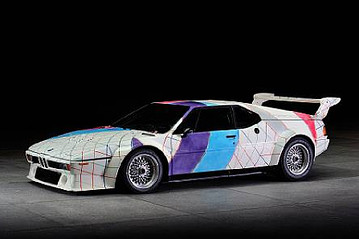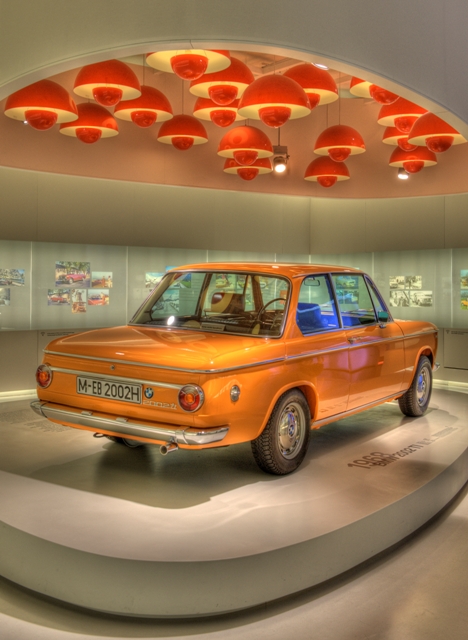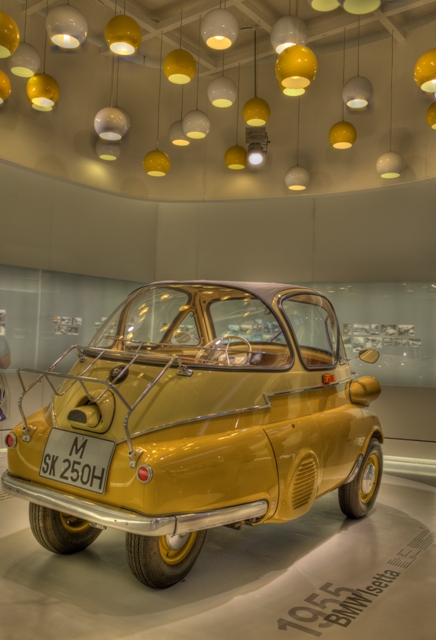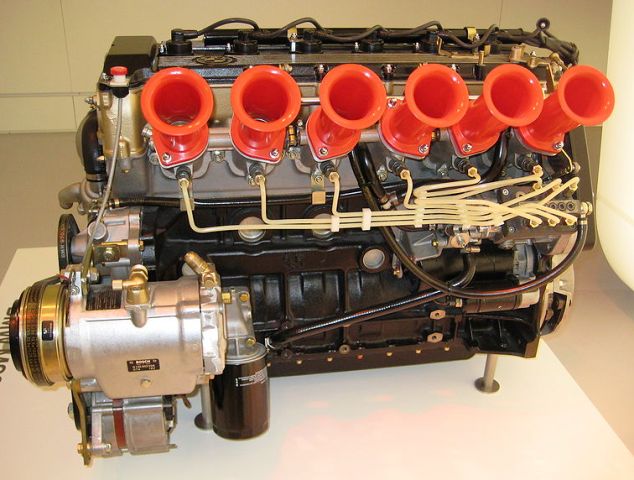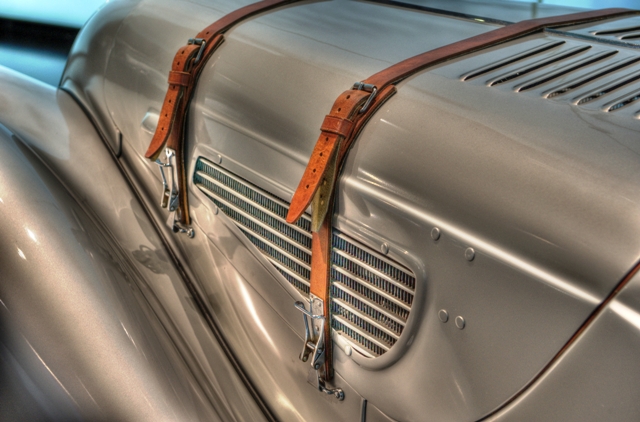BMW Museum - Technology & Lifestyle
 Wednesday, March 28, 2012 at 6:00
Wednesday, March 28, 2012 at 6:00 Whoops - we had posted already from the BMW museum here in Munich, but forgot to add this one about the "BMW Welt"! So here it is.
The BMW Museum is obviously about the cars, but BMW also sends strong messages about the company as a technological innovator. Plus the nearby "BMW Welt" (BMW World) emphasizes its role as a lifestyle icon.
The museum had a cool display of the different model badges over time (going bottom to top):
The next photo isn't even of a full-size car, but the concept is cool. The body of this small-scale model is covered in 260 "scales" that can be individually raised and lowered. Using the car's computer, the matrix of scales could be actuated in real time to either maximize efficiency (minimize drag) or create wind resistance and body pressure in specific locations that improve grip and handling. They could also be solar panels that move with the sun!
Who wouldn't want this solar-electric futuristic BMW machine? Not a lot of trunk space though...
BMW has also been a pioneer in hydrogen and hydrogen-hybrid cars. The museum had their hydrogen racecar on display -- the BMW HR2 is the fastest hydrogen-powered car ever. It produces 285hp with a top speed of 185mph. Acceleration is listed as 0-60mph in 6 seconds. It uses a modified 6-liter, 12 cylinder engine:
This technology is theoretically available in the BMW Hydrogen 7. It's claimed to be the world's first production-ready hydrogen vehicle, but very limited production (only 100 were made, and no more planned).
In another room, the Museum had an interactive/multimedia table to show off BMW history. The interface wasn't perfect, but certainly reinforced the message/feeling of BMW as technology-oriented (video below):
Here's a video of the "touch table" in action:
Of course, advertising is a key to building their brand image, and they had a room of print ads over time:
From the BMW Museum, we walked to the BMW Welt ("BMW World") just a minute away. BMW Welt is not about the past, like the Museum, but about todays models (both cars and motorcycles) plus lifestyle and design products.
In the BMW Welt, Frau A took the chance to sit in a 640i cabriolet. This is one handsome car (and gorgeous lady). There was a bit of a wait -- lots of people wanted to sit in this car!
Sitting just outside the BMW Welt building were their motorcycles. We also hopped on some of these - Frau A would definitely meet the polizei with this one (she's a bit of a lead-foot):
In addition to cars and motorcycles, BMW Welt also has living room concepts and products -- so you can have the BMW identity in every aspect of you life, either moving or sitting still. (For example, they had 2 living rooms set up, one in modern decor and the other almost cowboy decor. Strange.)
You can spend almost a whole day at the BMW Museum and nearby BMW Welt. I know friends of mine from the U.S. would love to come visit... any day, guys!
 Herr J ...
Herr J ...  2 Comments
2 Comments 



